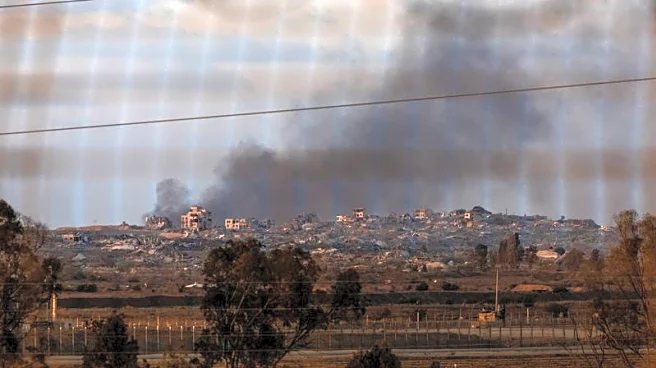What's Happening?
NATO has announced a new defense spending benchmark of 5% of GDP by 2035, as decided during the June 2025 summit in The Hague. This pledge is divided into two parts: 3.5% for traditional defense needs
such as personnel and equipment, and 1.5% for broader defense-related spending, including infrastructure protection and cyber defense. However, the lack of clear definitions and oversight mechanisms for the 1.5% allocation has raised concerns about potential misuse and creative accounting by member states. The ambiguity in what qualifies as resilience spending could lead to countries re-labeling existing civilian programs as security-related to meet the target, potentially undermining NATO's cohesion and burden-sharing principles.
Why It's Important?
The significance of this development lies in its potential impact on NATO's strategic balance and collective defense capabilities. The ambiguity surrounding the 1.5% spending could lead to discrepancies in how member states report their contributions, affecting transparency and trust within the alliance. This could dilute the intended strengthening of NATO's defense posture, particularly for countries on the eastern frontier that view the pledge as essential for deterrence. Ensuring that resilience spending genuinely enhances military readiness is crucial for maintaining NATO's credibility and effectiveness in addressing modern security challenges, including cyber threats and infrastructure sabotage.
What's Next?
NATO must establish clear guidelines and reporting standards to ensure that the 1.5% resilience spending is used effectively and transparently. This includes defining what qualifies as resilience spending, implementing outcome-based metrics, and preventing the re-labeling of civilian projects. The alliance is expected to prepare these measures in time for the 2026 NATO Summit in Turkey. Additionally, integrating resilience spending into the NATO Defense Planning Process and coordinating with the EU could prevent duplication and enhance operational effectiveness. These steps are vital to transforming the political compromise into a strategic capability that strengthens NATO's collective defense.
Beyond the Headlines
The broader implications of NATO's spending pledge highlight the evolving nature of defense in the modern era. Resilience is increasingly recognized as a critical component of military power, enabling societies to withstand and recover from crises. This shift reflects a growing understanding that security is not solely about military might but also about the robustness of civilian systems and infrastructure. As hybrid threats become more prevalent, investing in resilience could redefine how nations approach defense, emphasizing the interconnectedness of military and civilian domains.












